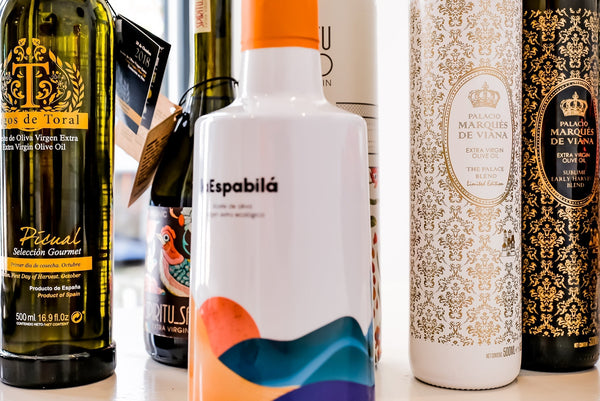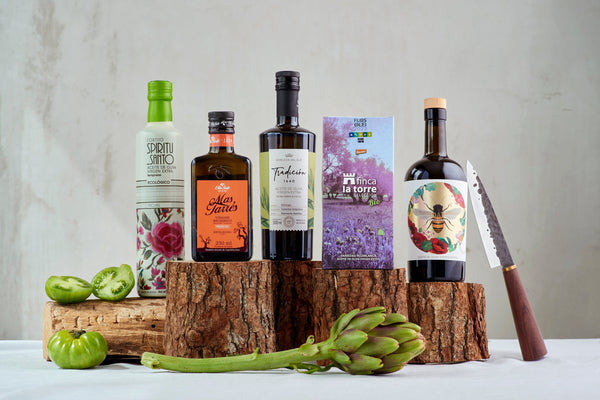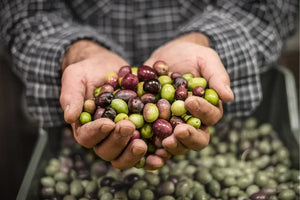The Truth About Extra Virgin Olive Oil: What Cold-Pressed Really Means (And Doesn’t)

If you've ever wandered the olive oil aisle wondering whether “cold-pressed” or “first pressing” really means you’re getting the best olive oil in the world, you’re not alone. These terms are often used on labels to imply superior quality but actually they aren't really relevant any more.
To be legally classified as extra virgin, olive oil must be extracted at temperatures no higher than 27°C (80.6°F). Why? Because heat breaks down the delicate polyphenols and antioxidants that give the healthiest extra virgin olive oil its flavor and health benefits. Once you go over 27°C, the olive oil produced will be defective and it's no longer high quality extra virgin olive oil, but something of a lower grade—like virgin olive oil or even olive oil. So, cold pressed is a requirement when we're talking about extra virgin olive oil not something that's extra special.
The Real Deal With Cold-Pressed and First Pressing
Until the advent of stainless steel in the 1960s, olive oil was produced in quite a simple way - the olives were ground to produce a paste from which the oil was collected. As early as 4000BC olive oil was first produced in the Levant (Eastern Mediterranean) using stone mortars and wooden pestles to grind olives. Over time, this method evolved into crushing the olives using stone presses and woven mats then screw press designs became prevalent. The one you see below is from an olive oil museum I visted a few years ago in Catalunya.

While these methods of producing olive oil did work, they left a lot of olive paste and the oil mixed in with that paste on the stones and mats so people would flush this out with hot water. This "second" pressing was, as you can imagine, inferior as by the time the oil was extracted it had been degraded by exposure to heat and air.
Today, things are different.

Modern EVOO: A Science of Quality
Since the 1960s and 70s, the production of extra virgin olive oil has radically changed. Today extra virgin olive oil (EVOO) is produced using two and three phase centrifugation whereby the olive paste is spun to separate the oil from the solids. The machinery is all stainless steel and temperatures are strictly controlled and usually operated by experts.
Nowadays the only hot water that's used is for keeping the mill and all the machinery and equipment clean as a whistle between harvests. This is how you get properly made and hopefully award-winning EVOO that’s not only delicious but also retains its natural nutrients.

Why Temperature Control Matters So Much
Heat is the enemy of good olive oil - it breaks the polyphenols and antioxidants that give the healthiest extra virgin olive oil its flavor and health benefits and also flattens out the flavour. 27°C (80.6°F) is the upper legal limit of the permitted temperature during production and actually, some of the world's best producers wouls be aiming for a few degrees below that as it can make a huge difference to the final product.
This is not easy to achieve. Remember that in the Mediterranenan and other olive oil prodcing regions, the temperatures in the groves can already exceed 30°C in October. So, unless the olives are brought to the mill as quickly as possible they can start to ferment and degrade. These days, producers are starting to experiment with cooling the olives after they've been picked before they are milled as more and more research is showing just how crucial temperature control is to making the best extra virgin olive oil.

Once in the mill the heat is very carefully managed and expertise is required throughout the whole process.
This is why choosing sustainably sourced extra virgin olive oil from a trusted producer is so important. When the label reads organic extra virgin olive oil or premium olive oil, it should mean the oil was produced under strict quality controls.
But the only way to know for sure? Taste before you buy and if that's not possible—only buy from a producer or vendor you trust.










